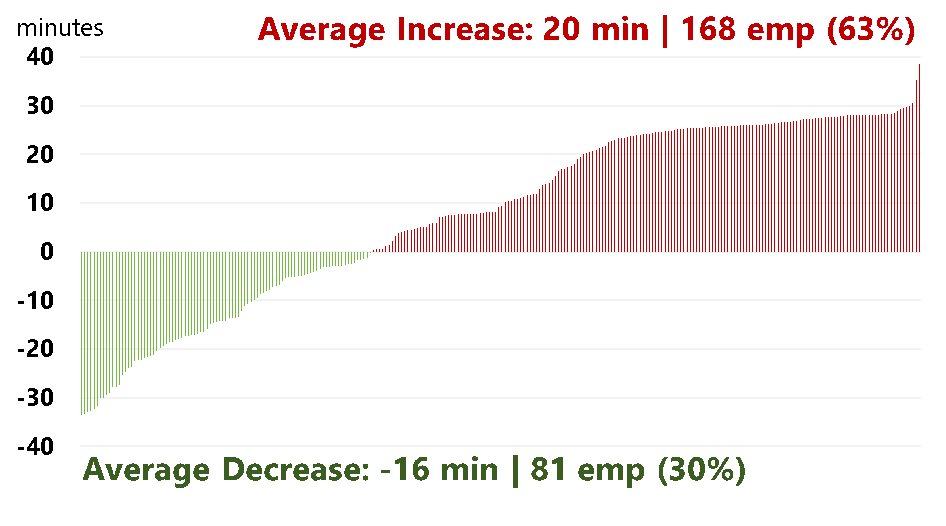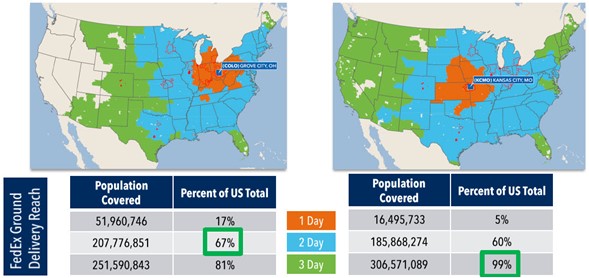In 2020, when much of the world was ordered to work from home, something became glaringly apparent: The U.S. workforce spends too much time commuting.
Yes, deep down we already knew this, but in the past, as we loaded up our cars or headed to the train each morning, we accepted it as a necessary evil – the price of doing business. Yet the global work experiment that began quite unexpectedly demonstrated that precious time recovered from long commutes could be spent on more productive business and personal priorities. And, as competition to attract and retain a qualified workforce has become fiercer, organizations of all types have had to consider the role travel times play in an employment decision.
One way to frame this conversation is through travel time modeling.
Trust the Science
Travel time modeling is the process of using an analytical tool to examine current accessibility structures, compare them to alternatives, and quantify the risks and impacts associated with a location or business decision. It begins with understanding the distribution of employee commute times by mode of travel, time of travel, business unit, position, salary level, and priority. This information is used as the baseline when running impact scenarios and can provide valuable insights related to potential inequality amongst commuters.
 |
 |
Our team relies on multiple Google Maps APIs to accurately reflect the most up-to-date information, incorporating:
- Current in-place transportation infrastructure (road closures, transit schedules, construction, etc.)
- Traffic patterns
- Departure and arrival times for each employee (shift schedules, peak and off-peak adjustments)
- Travel date (Wednesdays have high commute volume and the least holiday interference)
- Time spent on public transit
- Travel time to and from transit stations
- Time to transfer between transit vehicles
The analysis quantifies the number and percentage of employees who would be positively or negatively impacted by a relocation, consolidation or expansion decision by analyzing the change in travel times, distance, attrition risk, replacement cost exposure, and annual transportation expenditure relative to individual salaries.
Employee attrition risk can be estimated by analyzing commute times relative to the regional average and their peers, the annual cost of transportation relative to their salary, and the positive or negative change in commute times related to a relocation decision. The cost to replace a lost employee varies by several factors and can be quantified with an understanding of each employee’s attrition risk profile.
Benefits Beyond Minimizing Attrition
Travel time modeling has benefits far beyond defining the probability and cost of workforce attrition. For example:
- Organizations interested in reducing their carbon footprint can use travel time modeling to calculate the total distance employees travel on a given workday, helping an organization estimate the average annual gas consumption and expenditure of its workforce and providing a baseline for reduction.
- Proximity to customers, suppliers, and talent pools that that support business operations and growth can be quantified and visualized through travel time modeling and inform future real estate decisions.
- The travel time for the movement of goods, rather than people, is critically important in supply chain optimization and demands the same level of analysis and precision for organizations heavily invested in logistics operations.

By defining and, when appropriate, comparing travel times across multiple origin and destination scenarios, powerful insights emerge that can have a significant impact on the future success of business. It’s a conversation worth having as the war for talent – as well as the drive for greater organizational efficiencies – continues across every sector of the economy.
Chase is a Managing Director of Transwestern's Tenant Advisory + Workplace Solutions practice, leads Strategic Consulting Services nationally, and supports the company's global alliances as a liaison with Canada’s ENCOR Advisors.
SEE ALSO:
- Decentralizing the Office: Micro-Location Strategies to Support Workforce Retention and Talent Acquisition
- Modeling Workplace Demand
RELATED TOPICS:
commercial real estate
real estate
tenant advisory
workplace solutions
office leasing
agency leasing

